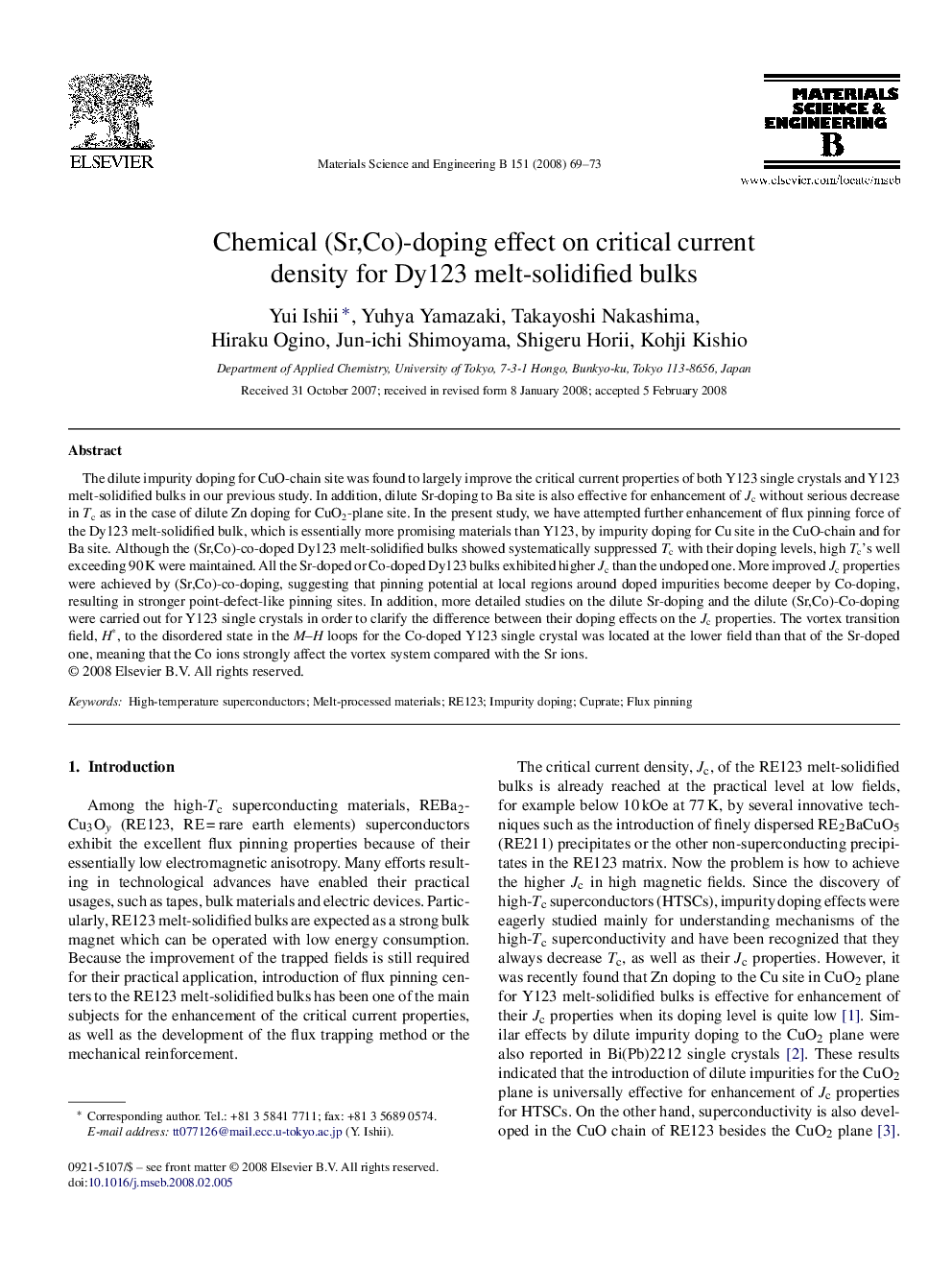| Article ID | Journal | Published Year | Pages | File Type |
|---|---|---|---|---|
| 1531274 | Materials Science and Engineering: B | 2008 | 5 Pages |
The dilute impurity doping for CuO-chain site was found to largely improve the critical current properties of both Y123 single crystals and Y123 melt-solidified bulks in our previous study. In addition, dilute Sr-doping to Ba site is also effective for enhancement of Jc without serious decrease in Tc as in the case of dilute Zn doping for CuO2-plane site. In the present study, we have attempted further enhancement of flux pinning force of the Dy123 melt-solidified bulk, which is essentially more promising materials than Y123, by impurity doping for Cu site in the CuO-chain and for Ba site. Although the (Sr,Co)-co-doped Dy123 melt-solidified bulks showed systematically suppressed Tc with their doping levels, high Tc's well exceeding 90 K were maintained. All the Sr-doped or Co-doped Dy123 bulks exhibited higher Jc than the undoped one. More improved Jc properties were achieved by (Sr,Co)-co-doping, suggesting that pinning potential at local regions around doped impurities become deeper by Co-doping, resulting in stronger point-defect-like pinning sites. In addition, more detailed studies on the dilute Sr-doping and the dilute (Sr,Co)-Co-doping were carried out for Y123 single crystals in order to clarify the difference between their doping effects on the Jc properties. The vortex transition field, H*, to the disordered state in the M–H loops for the Co-doped Y123 single crystal was located at the lower field than that of the Sr-doped one, meaning that the Co ions strongly affect the vortex system compared with the Sr ions.
